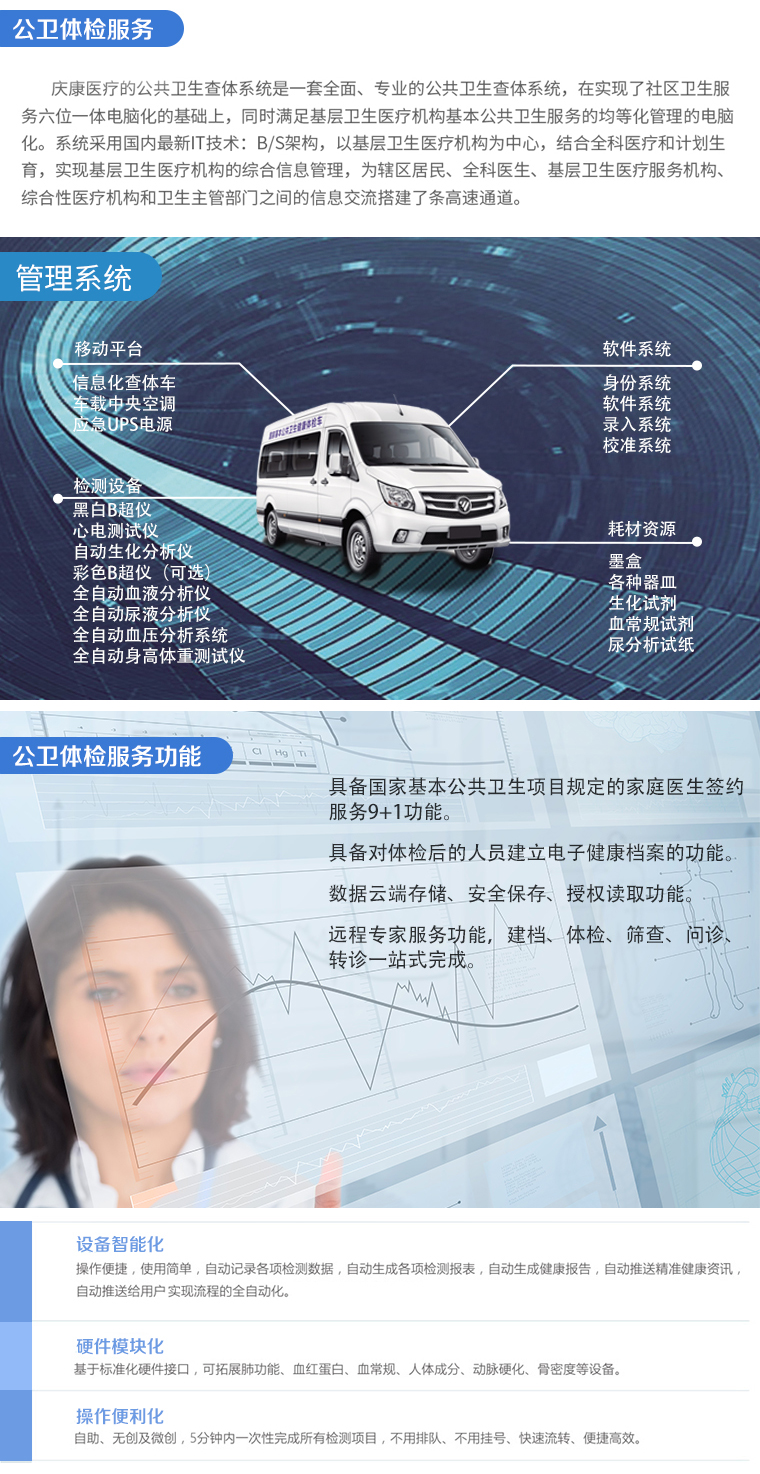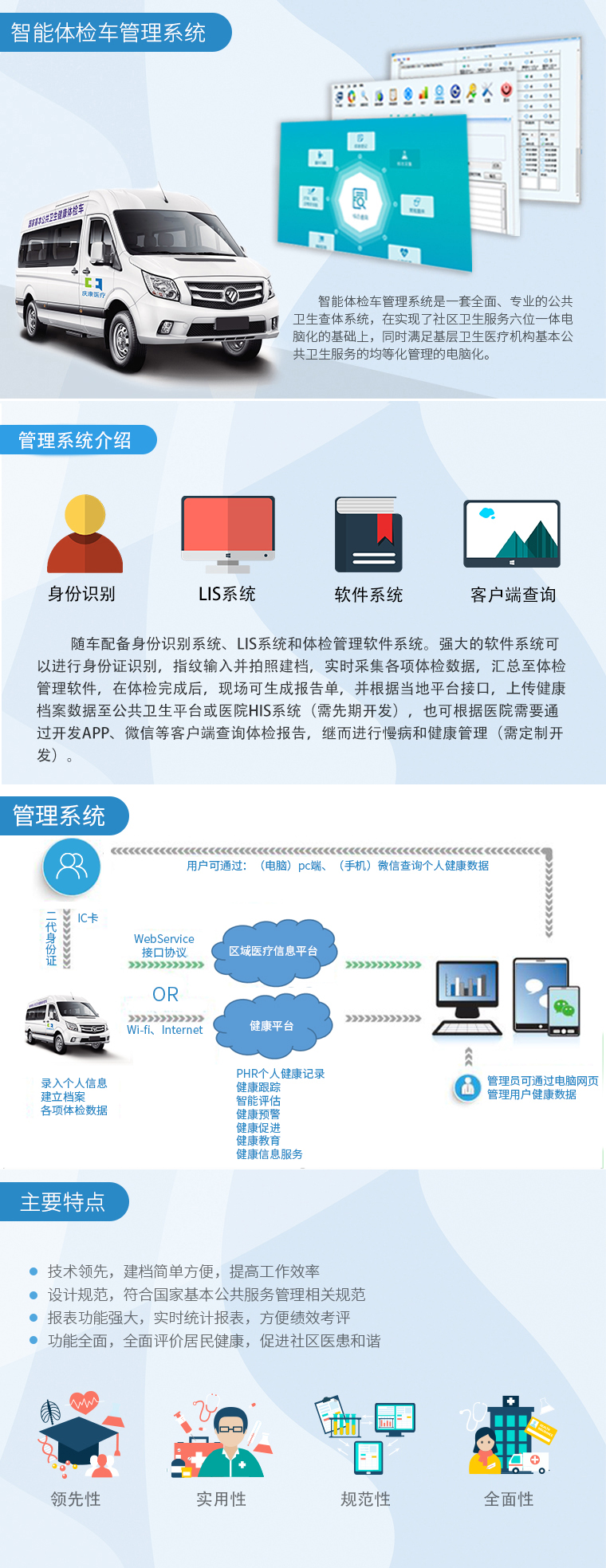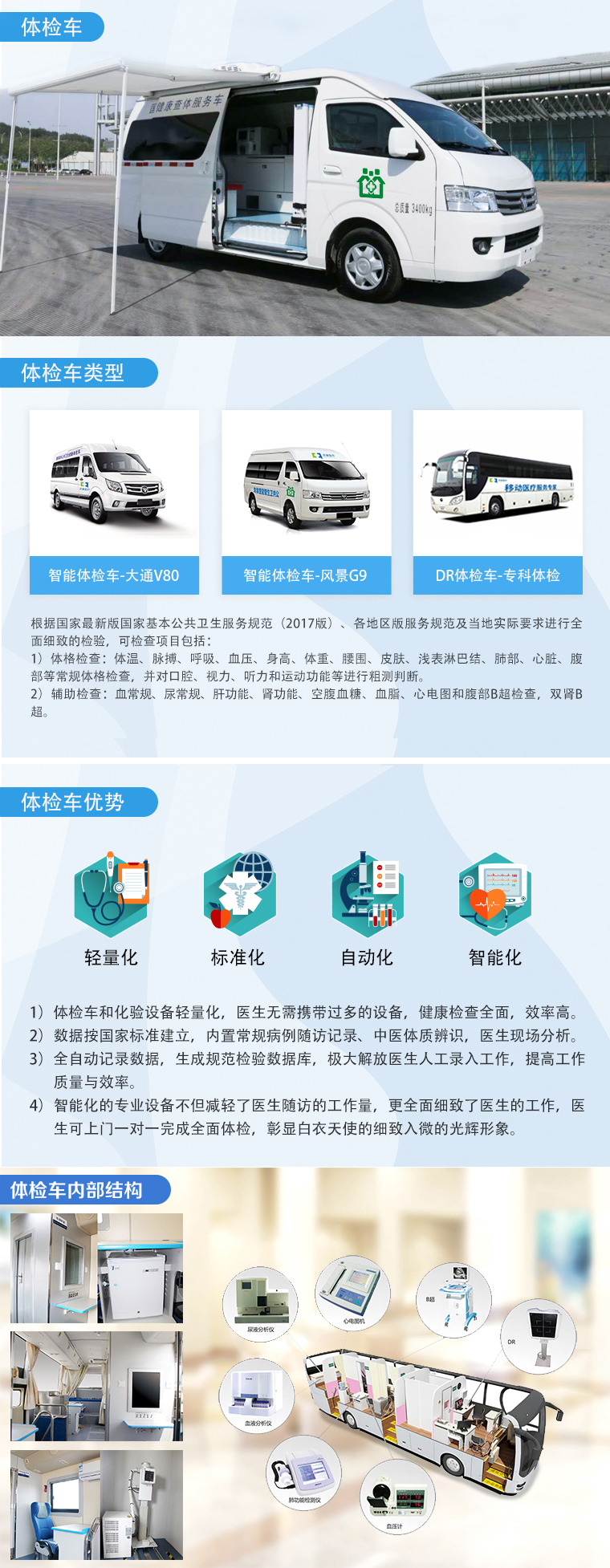實(shí)施案例
產(chǎn)品推薦
新聞推薦
智能慢病管理系統(tǒng)CDSS系統(tǒng)
- 2023-04-17
- http://www.qlhstly.com/ 原創(chuàng)
- 130
Chronic disease CDSS is a comprehensive intelligent decision support platform for the prevention, diagnosis, treatment, management, and health of chronic diseases. It effectively integrates clinical medical knowledge, expert experience, and deep learning models to assist doctors in controlling chronic disease patients throughout the entire process, improving diagnosis and treatment levels and efficiency, improving residents' health levels, and reasonably reducing medical insurance costs
功能介紹
Function Introduction
轉(zhuǎn)診建議
Referral suggestions
自動(dòng)抓取病史及檢查檢驗(yàn)信息,智能識(shí)別基層處置范圍之外的慢病并發(fā)癥等危重情況,并推薦出轉(zhuǎn)診信息,提示基層醫(yī)生進(jìn)行迅速合理的向上轉(zhuǎn)診操作
Automatically capture medical history and examination and testing information, intelligently identify critical situations such as chronic disease complications outside the scope of grassroots treatment, and recommend referral information, prompting grassroots doctors to quickly and reasonably carry out upward referral operations
輔助診斷
Auxiliary diagnosis
基于大專(zhuān)家臨床經(jīng)驗(yàn)和大量臨床診療數(shù)據(jù)結(jié)合的深度學(xué)習(xí)模型,針對(duì)患者病史,智能推出診斷提示,圈定疑似疾病,輔助醫(yī)生進(jìn)行精細(xì)化診斷
Based on the clinical experience of major experts and a large amount of clinical diagnosis and treatment data, a deep learning model is developed to intelligently launch diagnostic prompts for patients' medical history, delineate suspected diseases, and assist doctors in fine diagnosis
合理性建議
Reasonable suggestions
根據(jù)患者病情給出個(gè)性化檢查檢驗(yàn)建議,提升檢查檢驗(yàn)項(xiàng)目的合理性
Provide personalized examination and testing suggestions based on the patient's condition to enhance the rationality of examination and testing items


病情嚴(yán)重程度評(píng)估
Assessment of the severity of the condition
自動(dòng)獲取評(píng)估信息,在醫(yī)生有需要時(shí)提供標(biāo)準(zhǔn)化疾病評(píng)估路徑,幫助醫(yī)生更好地進(jìn)行病情分層
Automatically obtain assessment information and provide standardized disease assessment pathways when needed by doctors, helping them better stratify their conditions
治療方案推薦
Recommended treatment plan
基于臨床指南診療路徑,自動(dòng)融合患者病情體征,及用藥史、過(guò)敏史、既往史等信息,個(gè)體化給出專(zhuān)病治療方案建議,輔助醫(yī)生進(jìn)行個(gè)體化治療
Based on clinical guidelines for diagnosis and treatment pathways, automatically integrate patient's condition and physical signs, as well as medication history, allergy history, past history, and other information, provide personalized recommendations for specialized disease treatment plans, and assist doctors in personalized treatment
個(gè)體化健康處方
Individualized health prescription
根據(jù)患者的慢病分級(jí)評(píng)估結(jié)果,智能推薦患者的個(gè)體化管理方案,包括隨訪、用藥、運(yùn)動(dòng)、飲食、健康教育內(nèi)容
Based on the patient's chronic disease grading evaluation results, intelligently recommend personalized management plans for patients, including follow-up, medication, exercise, diet, and health education content
智能隨訪管理
Intelligent follow-up management
用戶(hù)個(gè)體化方案確定后,會(huì)自動(dòng)生成隨訪任務(wù),可以在患者列表,患者管理首頁(yè)以及隨訪任務(wù)列表,進(jìn)入隨訪上報(bào)管理。支持隨訪異常提示和隨訪記錄查看。
After the user personalization plan is determined, follow-up tasks will be automatically generated, which can be accessed in the patient list, patient management homepage, and follow-up task list to enter follow-up report management. Support for abnormal follow-up prompts and viewing follow-up records.
統(tǒng)計(jì)報(bào)表
Statistical report
體系化慢病管理統(tǒng)計(jì)報(bào)表,可支持當(dāng)前慢病系統(tǒng)中患者總?cè)藬?shù)、各病種人數(shù)以及占比、各病種不同病情等級(jí)患者比例、各病種管控率和達(dá)標(biāo)率
Systematic chronic disease management statistical report, which can support the total number of patients in the current chronic disease system, the number and proportion of each disease type, the proportion of patients with different disease levels, the control rate and compliance rate of each disease type
產(chǎn)品優(yōu)勢(shì)
Product advantages
慢病管理新模式
New mode of chronic disease management
以數(shù)據(jù)智能服務(wù)+家庭可穿戴設(shè)備為依托,線上線下聯(lián)動(dòng),實(shí)現(xiàn)智能化全流程管控,構(gòu)建“三師共管”的慢病管理新模式
Relying on data intelligence services and home wearable devices, with online and offline linkage, achieving intelligent full process control, and building a new model of chronic disease management with "three teachers' joint management"




